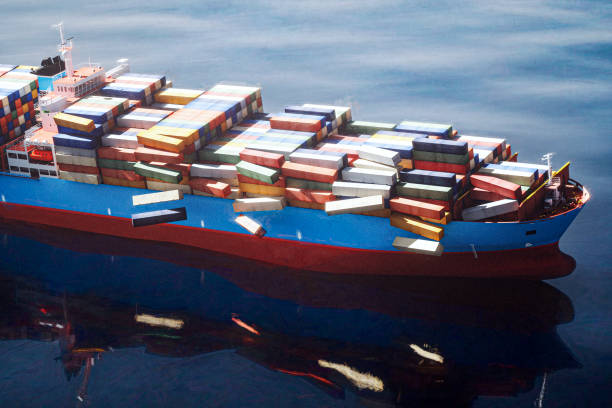While supply chains globally have been trying to brush off the havoc created by the pandemic, frequent container line delays have been like a sore thumb and have complicated the path to recovery.

2021 saw only around 40% of container ships arriving at ports on time.
The beginning of 2022 gave us a glimmer of hope, but things again started going downhill in the next few months.
The ocean freight delays are a part of the increasing issues surrounding ocean freight, such as shortage of finished goods, increasing raw material costs, and an increase in freight rates.
This article lays down the ten primary reasons behind ocean freight delays that are proving catastrophic for global supply chains.
Reasons for ocean shipping delays
When consumers order something, they would like to get it delivered on time. They rely on your logistics and management to ensure timely delivery.

But there are certain factors that can put your deadlines at bay and make it difficult for you to meet your commitments.
Here are the top 10 reasons for ocean shipping delays –
1. Change in schedule
One of the issues that gripe ocean transportation, especially inland, is an abrupt schedule change.
It happens during peak season or when factories are closed for holidays or any other reason for a specific timeframe.
Logistics companies continue to tackle demand fulfillment in such cases, and managing the schedule becomes more complicated once everything is back to normal.
2. Feeder schedule failures
Only 35% of the world line routes are covered on direct services.
Ocean freight is managed by a mix of large vessels and feeder vessels. While the former only has a small part in the overall logistics and distribution, the latter carries the load to the port of discharge.
So, these feeder vessels undertake several short trips that span for a few days.
In such cases, if a consignment misses out on a feeder, they will have to wait for the next vessel to arrive. This means that the delivery will be delayed by a few days without any visible fault of the people involved.
3. Port congestions
A port has a limited capacity for handling demand and supply.
The recent disruptions in the supply chain have led to an increased demand when things started looking bright. It led to congestion where ports could not meet incoming needs with aplomb.
It inadvertently meant business was hampered, and estimated transit time became ineffective because very few knew when their container would arrive and leave.
4. Customs issues
Automation is yet to land in full swing at the customs. So, there are a lot of workers who have severely been affected by the constant fluctuations in demand.
These individuals often decide to go on strikes or take longer times than usual to complete the paperwork, delaying the overall process.
5. Rolled cargo
In the shipping world, each vessel has a plan pertaining to the containers it will load and unload at each port before it sets sail.
In many cases, these vessels are overbooked, and several containers do not find a place for loading and are rolled over for several trips. While the reason behind such a halt can be any, it impacts delivery time and leads to delays in reaching the final customer.
6. Inadequate technology
As mentioned above, automation is yet to make its presence felt in the ocean freight world.
As a result, most ports have no option but to deal with old and outdated software or obsolete machinery, which takes longer than usual and is less effective in handling cargo.
So, unless we see ports upgrade their legacy setting, it would inadvertently delay deliveries and be a bottleneck for supply chain functioning.
7. Damage to cargo during shipment
A ship has over 100,000 parts that work together to ensure its smooth functioning.
But when any of these starts lagging because of issues or makes it impossible for the ship to continue operations, the recovery process can take a few days to a few months.

Of course, if there is an alternate shipping line, these goods can be transshipped, but still, it would lead to a delay in the overall delivery times.
8. Weather conditions and other navigational issues
Countries worldwide are suffering from erratic weather, and it is indirectly affecting supply times too. Such turbulent weather has resulted in navigational challenges and can lead to delays in dispatch or arrival of the containers.
9. Route changes
Route changes are regular with ocean freight.
The sea is a vast multitude of uncertainty, and there can be several reasons for the route change. These include the possibility of icebergs, erratic weather, pirates, and more, that can force the captain to order route changes for maximum safety.
Such a shift in course ultimately affects delivery times.
10. Other unforeseen conditions
In addition to the reasons mentioned above, there can be a plethora of other conditions that cause freight delays. These include collisions, vessel stability issues, technical issues at the port, and others that can cause unwanted delays in shipping times.
Conclusion
Since sometime in the beginning of 2020, delivery delays have griped ocean freight.
While we can associate it with the pandemic, shippers unearthed several other issues during this period that hurt delivery times globally and continue to haunt ocean freight timings.
Reach out to us at Andmakers for fulfillment and ocean freight related queries.

